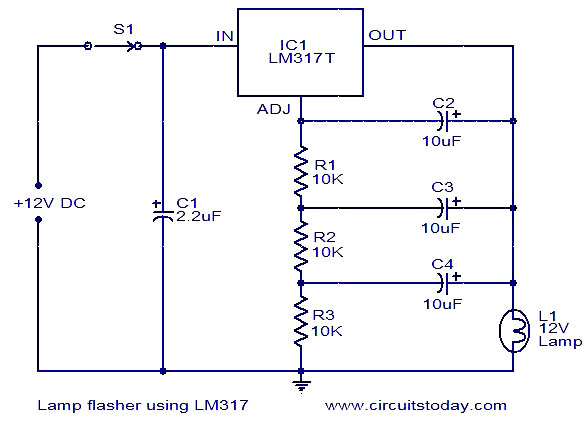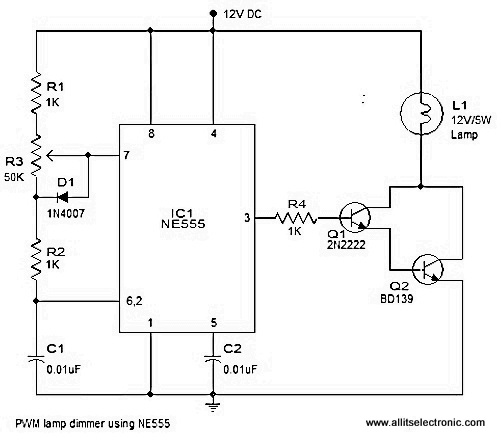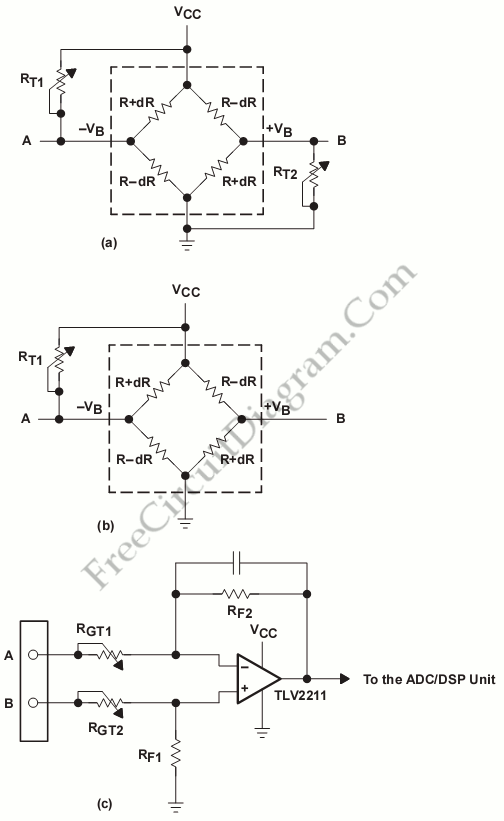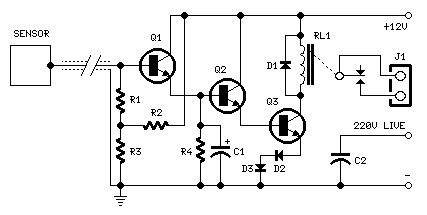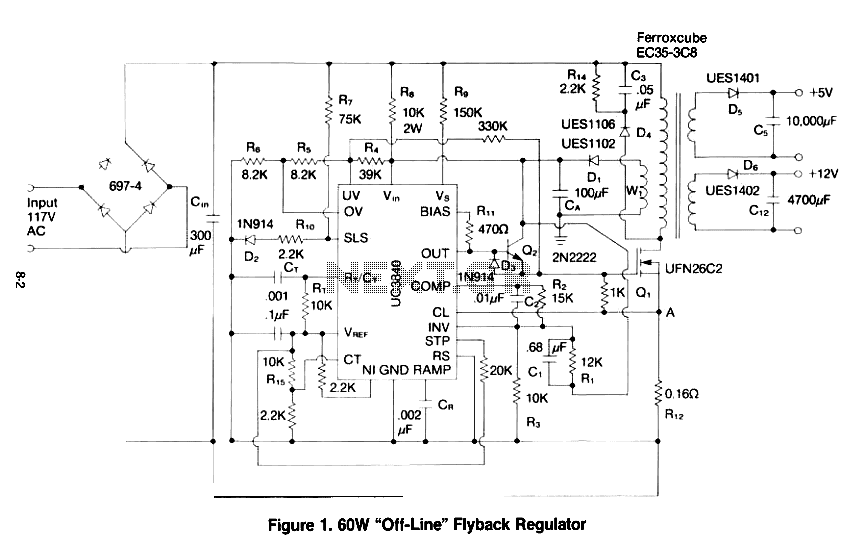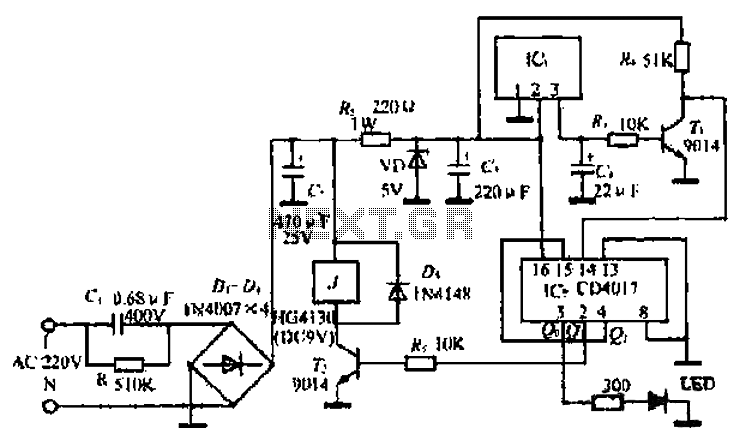
touch sensor switch using inverters
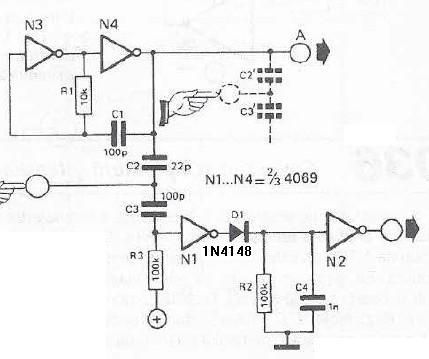
This touch sensor switch is designed using inverters (N1, N2) and several common electronic components. In the standby state, a signal is produced by the oscillator N3/N4 at the inputs of N1. When the touch sensor is activated, the hand's capacitance creates a bridge to the ground for the 1 MHz signal, causing the voltage at the input of N1 to decrease, resulting in a logical '1' output from N2. After the contact is released, a charge is transferred to capacitor C4 through diode D1, leading to a logical '0' output from N2 after a short duration.
The touch sensor switch circuit utilizes inverters N1 and N2 to create a responsive control mechanism. The oscillator comprised of N3 and N4 generates a continuous 1 MHz signal, which is crucial for the operation of the touch sensor. When a user touches the sensor, the inherent capacitance of the human body effectively alters the input conditions at N1, leading to a reduction in the voltage level at its input. This change is detected by N1, which then influences the output state of N2.
The circuit's design ensures that in the absence of a touch, N1 maintains a high voltage at its input, resulting in a logical '1' output from N2. This condition signifies that the system is in standby mode. Upon touching the sensor, the voltage drop at the input of N1 causes N2 to switch to a logical '0', indicating that the touch has been registered.
After the touch event, the circuit includes a capacitor (C4) that temporarily stores charge. The diode (D1) allows for the controlled discharge of this charge, which contributes to the timing of the output signal. As the charge dissipates, N2 returns to a logical '1', effectively resetting the system after a brief period. This feature ensures that the touch sensor remains responsive while also providing a clear indication of touch events through the logical state changes at the output.
Overall, this touch sensor switch circuit exemplifies a simple yet effective design that leverages basic electronic components to achieve reliable touch detection and control functionality.This touch sensor switch can is designed using inverters (N1, N2)and some common electronic components. In standby state at the entrances of N1 there is a signal produced by oscillator N3/N4. At the touch sensor hand capacity forms a bridge to the ground for the 1MHz signal so that the voltage signal at the entrance of N1 decreases more (at the ex
it of N2 is logical 1). After the release of contact, a signal charge C4 through D1 Mhz, so the output of N2 is 0 logic after short time. 🔗 External reference
The touch sensor switch circuit utilizes inverters N1 and N2 to create a responsive control mechanism. The oscillator comprised of N3 and N4 generates a continuous 1 MHz signal, which is crucial for the operation of the touch sensor. When a user touches the sensor, the inherent capacitance of the human body effectively alters the input conditions at N1, leading to a reduction in the voltage level at its input. This change is detected by N1, which then influences the output state of N2.
The circuit's design ensures that in the absence of a touch, N1 maintains a high voltage at its input, resulting in a logical '1' output from N2. This condition signifies that the system is in standby mode. Upon touching the sensor, the voltage drop at the input of N1 causes N2 to switch to a logical '0', indicating that the touch has been registered.
After the touch event, the circuit includes a capacitor (C4) that temporarily stores charge. The diode (D1) allows for the controlled discharge of this charge, which contributes to the timing of the output signal. As the charge dissipates, N2 returns to a logical '1', effectively resetting the system after a brief period. This feature ensures that the touch sensor remains responsive while also providing a clear indication of touch events through the logical state changes at the output.
Overall, this touch sensor switch circuit exemplifies a simple yet effective design that leverages basic electronic components to achieve reliable touch detection and control functionality.This touch sensor switch can is designed using inverters (N1, N2)and some common electronic components. In standby state at the entrances of N1 there is a signal produced by oscillator N3/N4. At the touch sensor hand capacity forms a bridge to the ground for the 1MHz signal so that the voltage signal at the entrance of N1 decreases more (at the ex
it of N2 is logical 1). After the release of contact, a signal charge C4 through D1 Mhz, so the output of N2 is 0 logic after short time. 🔗 External reference
